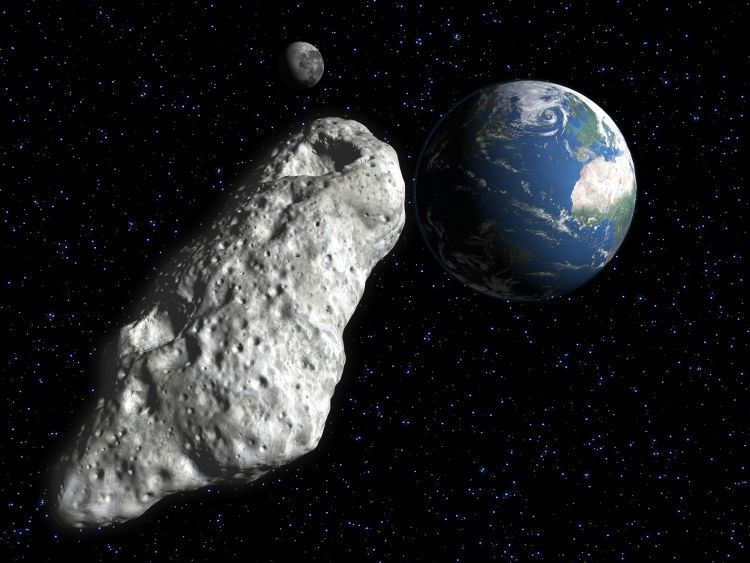
One form of action could involve dusting a threatening asteroid with a thin coat of paint. The paint would change the amount of sunlight reflected by the space rock, potentially nudging it away from Earth through the accumulated push provided by many thermal photons as they radiate from the asteroid's surface. (This force is called the Yarkovsky effect, after the Russian engineer who first described it around the turn of the 20th century.) [Photos: Asteroids in Deep Space]
The scheme would use powdered paint, which the sun's rays would then cure into a smooth coating. The paint would probably have to be applied long before any potential impact — years or decades, perhaps — to give the Yarkovsky effect enough time to make a difference.
"I have to admit the concept does sound strange, but the odds are very high that such a plan would be successful and would be relatively inexpensive," Dave Hyland, of Texas A&M University, said in a statement. "The science behind the theory is sound. We need to test it in space."
NASA is interested in Hyland's idea and has approached the researcher to discuss developing such a space test, Texas A&M officials said.
Hyland is not the only scientist who thinks paint could save Earth from a cataclysmic impact. Last year, an MIT graduate student proposed launching a spacecraft that would bombard a threatening asteroid with paint-filled pellets. The idea won the 2012 Move an Asteroid Technical Paper Competition, which was sponsored by the United Nations' Space Generation Advisory Council.
Whatever deflection strategies researchers devise, the first step toward safeguarding the Earth is to detect and map the orbits of potentially hazardous objects, Hyland said. One million or more asteroids are thought to lurk in near-Earth space, but just 9,600 of them have been discovered to date.
"The smaller ones like DA14 are not discovered as soon as others, and they could still cause a lot of damage should they hit Earth," Hyland said. "It is really important for our long-term survival that we concentrate much more effort discovering and tracking them, and developing as many useful technologies as possible for deflecting them."
Sign up for the Live Science daily newsletter now
Get the world’s most fascinating discoveries delivered straight to your inbox.
This story was provided by SPACE.com, a sister site to Live Science. Follow SPACE.com senior writer Mike Wall on Twitter @michaeldwall or SPACE.com @Spacedotcom. We're also on Facebook and Google+.













